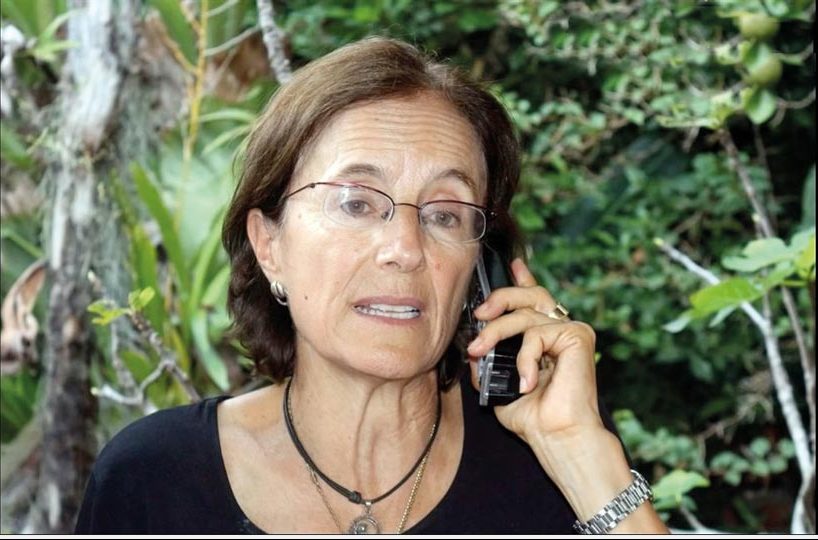As rumours abound of a horrifying new drug that is being circulated in Medellin in preparation for importation and sale, Charlotte Ryan points out that these claims may be overblown
It is like something out of a horror movie: a flesh-eating ‘zombie drug’ that dissolves the user’s flesh and cuts their life expectancy to just two or three years. Users say the high is like heroin, but it lasts a fraction of the time and leaves such a shocking litany of side effects you wonder why anyone would be stupid enough to try it. The answer? It’s cheap.
The drug is called krokodil, and was originally created as a morphine substitute in the 1930s. It was discontinued because of side effects. Then, it resurfaced in Russia around a decade ago, as a cheap alternative to heroin which the country’s poverty-stricken addicts were desperate enough to try.
 Made from ingredients including codeine that can be bought in the local pharmacy, the average cost of the drug is around $2-3 USD ($5,000 COP). This makes it a drug of the poor. As one addict told the British newspaper The Independent, “You’re dreaming of heroin, of something that feels clean and not like poison. But you can’t afford it, so you keep doing the krokodil. Until you die.”
Made from ingredients including codeine that can be bought in the local pharmacy, the average cost of the drug is around $2-3 USD ($5,000 COP). This makes it a drug of the poor. As one addict told the British newspaper The Independent, “You’re dreaming of heroin, of something that feels clean and not like poison. But you can’t afford it, so you keep doing the krokodil. Until you die.”
Due to toxic ingredients that include paint thinner and lighter fluid, the consequences of improperly injecting the drug are horrific. Addicts quickly develop the scaly sores which give the drug its name and abscesses form when they miss a vein.
Photographs of users in the later stages make compelling and disturbing viewing; unable to withstand the cocktail of chemicals it is being injected with, the flesh goes grey and rots, leaving users with their bones exposed.
Efforts have been made to combat the spread of this drug in Russia, including banning the sale of over-the-counter codeine pills.
But, as is always the case with a cheap fix, it appears to have already spread to other countries. For years now, we have been hearing rumours of cases in countries including the US and UK.
 There are now reports that the drug is on its way to Colombia. The NGO Corporacion de Consultorias de Estudios Urbanos C3 have done several studies which they say show krokodil’s entry to Medellin is imminent. One of the studies involved talking to people in Medellin’s comunas who said they had already seen ‘testers’ of the drug being handed out and that local drug dealers were preparing to import and sell the drug.
There are now reports that the drug is on its way to Colombia. The NGO Corporacion de Consultorias de Estudios Urbanos C3 have done several studies which they say show krokodil’s entry to Medellin is imminent. One of the studies involved talking to people in Medellin’s comunas who said they had already seen ‘testers’ of the drug being handed out and that local drug dealers were preparing to import and sell the drug.
Scary as this sounds, it’s not necessarily true. Understandably, flesh-eating zombie drugs capture people’s — and the media’s — attention. Some news outlets in the US and the UK have jumped at the chance to warn people about the ‘zombie drug’, but more often than not, the supporting evidence was underwhelming. The UK claims were made based on the ‘evidence’ of one doctor who said he had treated a patient with unusually serious sores for heroin, and so he came to the conclusion it must have been krokodil. In the US, several people claim to have taken the drug, and two girls claimed to have suffered flesh disintegration, but none of the cases were confirmed with lab testing.
In Medellin, the claims are based on several studies conducted by the NGO Consultorias. Crucially, these studies seem to rely on word-of-mouth, not the most reliable means of getting accurate information.
One reason why an invasion of fleshless zombies wandering the streets of Medellin seems a little fanciful is that there doesn’t appear to be the same market for the drug in Colombia. Russia has the highest number of heroin users in the world. In Colombia, on the other hand, just 1.5 percent of the country’s population have ever taken heroin. This is compared to more than 5 percent for bazuko (cocaine paste that is smoked) and cocaine, according to one study.
 What made krokodil such a terrifying epidemic in Russia was the country’s large number of heroin users, the scarcity and expense of heroin, poverty and the relative cheapness of krokodil. In Colombia, the drug and poverty problems certainly exist, but so do cheap drugs such as bazuko and the low number of heroin users in the country makes an epidemic of people chasing a heroin high unlikely.
What made krokodil such a terrifying epidemic in Russia was the country’s large number of heroin users, the scarcity and expense of heroin, poverty and the relative cheapness of krokodil. In Colombia, the drug and poverty problems certainly exist, but so do cheap drugs such as bazuko and the low number of heroin users in the country makes an epidemic of people chasing a heroin high unlikely.
Consultorios head Luis Guillermo Pardo says, “The ‘ krokodil ‘ from Russia joins the new fashion of cocaine with flavour which is unfortunately all the rage in the comunas”. The police “don’t rule out” the possibility that the drug is being distributed in Medellin, according to National Anti Narcotics Programme director general Ricardo Restrepo. The head of security for the city says that until now he has heard no reports of the drug’s entry into Medellin.
Nevertheless, krokodil’s dramatic symptoms and horrific life expectancy mean that NGOs and local police will continue to be vigilant of the drug’s entry into Colombia. Consultorias are also urging people to make themselves and others aware of its horrifying side effects. One person dying like the addicts in Russia is still one too many.





